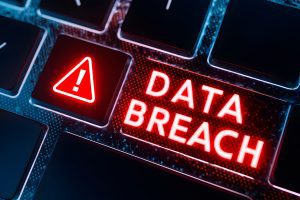Large and Small 401(k) Plans and a Handy Checklist!
Administering a retirement plan carries a fiduciary responsibility for the employer. For those stakeholders (it’s your retirement, too), monitoring the plans quarterly is just good business.
Two main benefits of quarterly 401(k) monitoring
FIRST BENEFIT
The participants gain from having the sponsor monitor their plan benefits on a routine and up-to-date basis. This is making sure the plan documents are being followed. If errors are found, they can be fixed immediately and corrected, whether they are prohibited transactions or just mistakes. Either way sooner is better.
SECOND BENEFIT
The plan sponsor can stay abreast of the market and the plan investments. For this to work well, the plan sponsor should be taking the time to meet with the financial advisors and possibly TPAs (Third Party Administrators) to go over potential changes to the plan’s investments line-up based on current market activity, economic, or political issues.
Monitoring the plans is important, but having an understanding of retirement plans, in general, is helpful. The following two sources cover both large and small plans.
Two sources of 401(k) information
For the large plans:
In an 88-page BrightScope report[1] published in August 2020, 401(k) plans (sometimes called Defined-Contribution or DC Plans) are studied in detail with data about the size of plans, the scope, and more. From the introduction, “The database is designed to shed light on DC plan design across many dimensions, including the number and type of investment options offered; the presence and design of employer contributions; the types of recordkeepers used by DC plans; and changes to plan design over time.”
It’s worth reading if you are considering a change in your current 401(k) or are offering one to your employees for the first time. It focuses on the larger (> 100 participants) plan.
For smaller plans:
For a look at smaller plan information and guidance, the IRS and Department of Labor’s “401(k) Plans for Small Businesses”[2] offers 19 pages of information to get started on these plans for your employees. It provides many definitions, including the differences between a traditional 401(k) plan, a safe harbor 401(k) plan, and an automatic enrollment 401(k) plan, although these different types are for employers of any size. This brochure covers only the first two types of plans, but is definitely worth a read if you’re just starting.
Retirement Plans in general
The defined benefit plans permit money contributed to grow through investments in many bonds, mutual funds, money market funds, savings accounts, and other investment vehicles such as stocks, bonds, mutual funds, etc. They offer significant tax advantages (including deduction of employer contributions and deferred taxation on contributions and earnings until distribution). Plus, they allow participants to take their benefits with them when they leave the company, a hassle-free solution for the employer and employee.
These plans do not run themselves, and even if outside entities are engaged to help keep the plan running smoothly, the sponsor is required to know what’s happening, or at least ask the right questions so you can understand the answers. The best way to manage a 401 (k) plan is through quarterly monitoring to ensure everything is handled correctly. Fortunately, many tools exist to point you in the right direction.
A checklist to help you
Running a business is a huge responsibility no matter the size of the business. Running a 401(k) plan means conforming to the IRS rules and regulations, which can change. We recommend using this IRS Publication 4531 “401(k) Plan Checklist” (Rev. 8-2021) every quarter to see how you’re doing against each of the items on the list.
You should be able to say “Yes” to all the items on the list. If not, the IRS’s advice is as follows:
“If you didn’t check all boxes, you may have a mistake in the operation of your plan. This list is only a guide to a more compliant plan, so checking all boxes may not mean your plan is 100% compliant. This list doesn’t contain all plan requirements and shouldn’t be used as a substitute for a complete plan review. Learn how to correct mistakes without penalty and without notifying the IRS at https://www.irs.gov/fixmyplan. Don’t send this checklist to the IRS.”
Finally, they offer three sources for additional information at the bottom of the form:
- Contact your tax advisor.
- Go to https://www.irs.gov/retirement-plans.
- Call the IRS at 877-829-5500.
Our recommendation
Retirement plans vary all over the map. SIMPLE 401(k) Plans, SIMPLE IRAs, SEP Plans (Simplified Employee Pension) Plans, 403(b) Plans and the plain 401(k) noted here are all great ways for companies and governments to show they care about their employees’ futures. They support the economy and its growth by participating in various investment instruments while also taking advantage of the tax advantages for themselves and their stakeholders. The more recently enacted CalSavers program started on July 1, 2019, requires California employers with five or more full or part-time employees to offer a retirement plan to their employees.
It’s hard to find and keep good people these days. A 401(k) retirement plan is a great way to round out the compensation for employees looking to have a competitive current wage that also offers them a way to save for their future retirement.
We recommend the routine, quarterly monitoring of plans of every size to yield the best results for everyone involved, as the rules can change and the world changes all too quickly! Be sure to use the checklist to monitor your 401(k) regularly.
If there are any questions about the different plans and how to be sure the plans are being handled correctly, you might consider consulting your CPA, financial advisors, and TPAs.
In California, an employer with five or more employees must have some kind of retirement plan. If they do not offer one, employers and savers can sign up for the CalSavers retirement savings program. We hope this reminds people that in general, familiarity with government regulations and quarterly monitoring are two of the best ways to ensure you stay in compliance.
[1] https://www.ici.org/system/files/attachments/pdf/20_ppr_dcplan_profile_401k.pdf
[2] https://www.irs.gov/pub/irs-pdf/p4531.pdf
monitoring 401(k) plans




